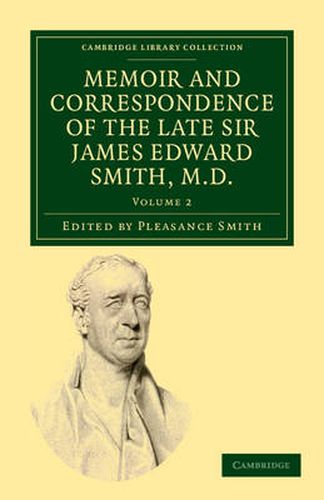Readings Newsletter
Become a Readings Member to make your shopping experience even easier.
Sign in or sign up for free!
You’re not far away from qualifying for FREE standard shipping within Australia
You’ve qualified for FREE standard shipping within Australia
The cart is loading…






Originally published in 1832, this two-volume account of the life of Sir James Edward Smith (1759-1828) was posthumously compiled by his wife, Pleasance (1773-1877). Smith trained originally as a doctor, but his independent wealth enabled him to pursue botany. Hugely influenced by the work of Linnaeus, he benefited greatly from the purchase of the latter’s library and herbarium in 1783, upon the advice of his friend, Sir Joseph Banks. He was highly regarded throughout Europe as a botanist, and in 1788 founded the Linnean Society. He published various botanical works, of which the most important was The English Flora (1824-8), and assisted in the publication of many more. His wife recounts his ‘religious, social and scientific character’ as well as his achievements, and Volume 2 includes correspondence from Alexander von Humboldt, and concludes with an appendix in which short papers by Smith present a variety of topics.
$9.00 standard shipping within Australia
FREE standard shipping within Australia for orders over $100.00
Express & International shipping calculated at checkout
Originally published in 1832, this two-volume account of the life of Sir James Edward Smith (1759-1828) was posthumously compiled by his wife, Pleasance (1773-1877). Smith trained originally as a doctor, but his independent wealth enabled him to pursue botany. Hugely influenced by the work of Linnaeus, he benefited greatly from the purchase of the latter’s library and herbarium in 1783, upon the advice of his friend, Sir Joseph Banks. He was highly regarded throughout Europe as a botanist, and in 1788 founded the Linnean Society. He published various botanical works, of which the most important was The English Flora (1824-8), and assisted in the publication of many more. His wife recounts his ‘religious, social and scientific character’ as well as his achievements, and Volume 2 includes correspondence from Alexander von Humboldt, and concludes with an appendix in which short papers by Smith present a variety of topics.